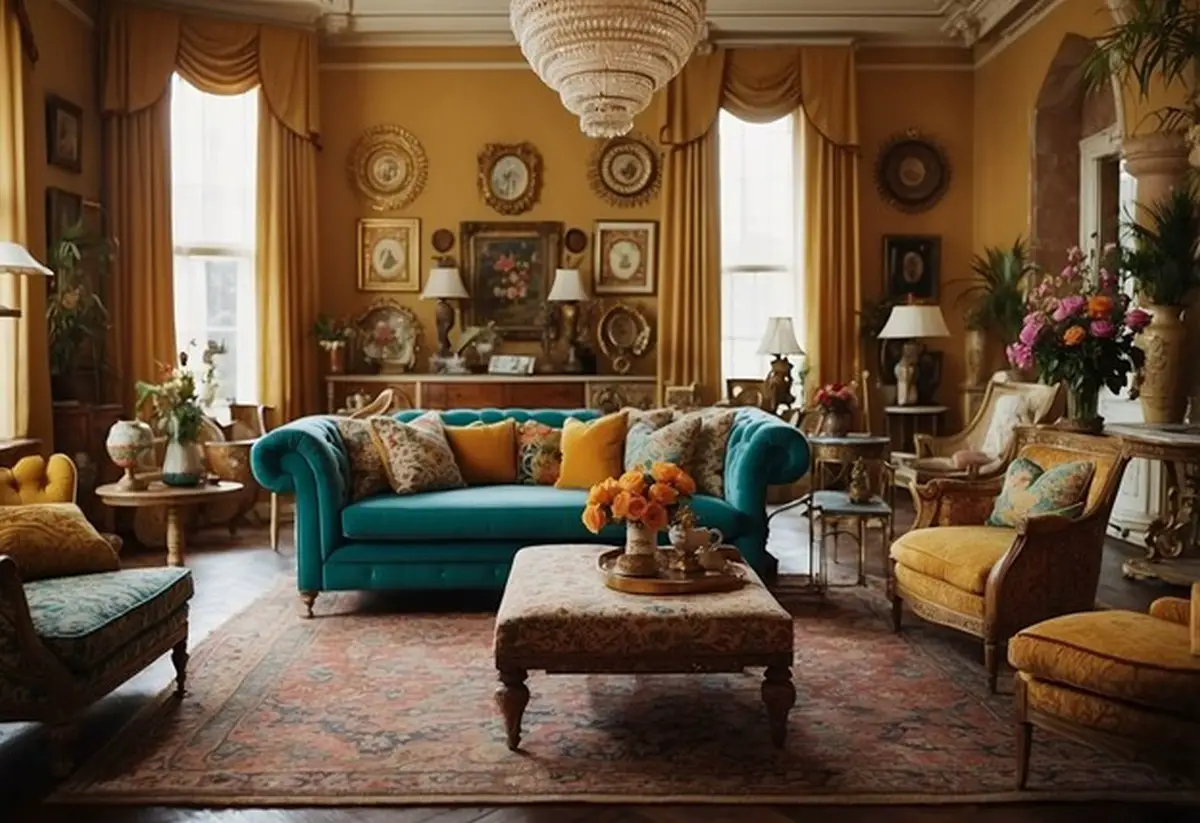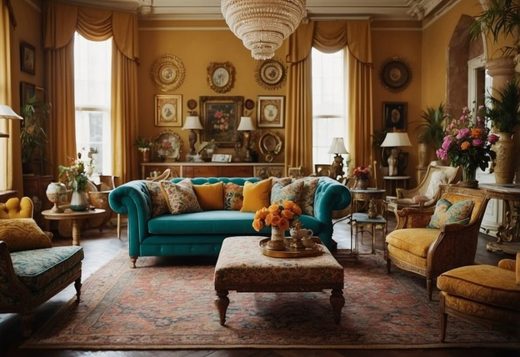What is a maximalist design guide, Home interior, Property decor advice, House style tips
What Is a Maximalist Design?
18 June 2024
Maximalist design is a bold and expressive approach that embraces complexity, rich textures, and vibrant colors. It shuns minimalism’s simplicity by focusing on creating visually stimulating environments filled with a variety of elements. This design style often features a mix of patterns, eclectic decor, and abundant details, making spaces feel lively and inviting.
In maximalist designs, every piece tells a story, contributing to a cohesive yet richly layered atmosphere. The use of diverse materials, vintage collections, and intricate artwork can transform a space into a dynamic and personalized environment. This approach encourages creativity and self-expression, often resulting in interiors that feel curated and curated and unique.
Maximalism is perfect for those who love to surround themselves with things that inspire them. By integrating various elements harmoniously, it creates a sense of depth and texture that constantly draws the eye. Embracing this design philosophy can turn any space into a vibrant, engaging place full of character and charm.
Principles of Maximalist Design
Maximalist design embraces a bold approach to interior aesthetics. It focuses on the use of complexity, vivid color schemes, eclectic combinations, and rich layering to create visually stimulating environments.
Embracing Complexity
Complexity is at the heart of maximalist design. Designers incorporate a variety of patterns, shapes, and materials within a single space. The goal is to create an engaging environment where there’s always something new to notice.
Unifying different elements harmoniously requires expertise. Interior design firms often work meticulously to ensure each piece complements the others. This involves balancing busy patterns with calm elements and ensuring that every detail, no matter how small, adds to the overall composition.
Bold Color Schemes
A key feature of maximalist design is the use of bold color schemes. Designers don’t shy away from vibrant hues and striking contrasts. Color combinations are chosen to create a lively and energetic atmosphere.
Interior design firms carefully select colors that resonate with the desired emotional tone of the space. Often, they mix warm and cool tones to generate a dynamic feel. This can include anything from deep reds and bright yellows to teal blues and rich purples, creating a space that exudes personality.
Eclectic Aesthetics
Eclectic aesthetics play a significant role in maximalist design. This approach involves mixing and matching various styles, eras, and influences. The result is an interior that feels collected and curated over time rather than designed all at once.
An interior design firm might blend vintage pieces with modern art or combine traditional furniture with contemporary lighting fixtures. This aesthetic requires a keen eye to avoid visual chaos while ensuring there’s a cohesive storyline that ties all elements together. It’s about creating a visually rich and narratively interesting experience.
Layering and Texture
Layering and texture add depth to maximalist interiors. Through the strategic use of fabrics, rugs, wallpapers, and decorative accessories, designers create multi-dimensional spaces. Textural variety makes a room more inviting and compelling.
Interior design firms expertly combine different textures to enhance tactile and visual interest. For example, a velvet sofa might be paired with a silk cushion, while a wooden floor could be adorned with a patterned rug. These layers contribute to the overall sensory experience, offering a rich, immersive environment.
Executing Maximalist Design
Creating a maximalist design involves curating a rich array of colors, textures, and patterns to create visually stimulating environments. Each element, from furniture to spatial layout, must be selected and placed with intention.
Furniture and Accessories Selection
Furniture in maximalist design should be bold and statement-making. Vintage pieces, art deco items, or modern eclectic furniture can all contribute to an appealing maximalist space.
Accessories play a crucial role; choose items such as “bold rugs,” “vibrant lamps,” and “decorative mirrors” to add layers of interest.
Mixing and matching styles, colors, and materials is encouraged. Artwork is essential, with gallery walls or large statement pieces serving as focal points.
Textiles like throws, pillows, and curtains should have rich patterns and textures. An expert from an interior design firm often advises incorporating heirloom items or custom pieces to add uniqueness.
Balancing Elements
Balancing the multitude of colors, patterns, and textures is critical. Aim for a harmonious atmosphere rather than a chaotic one.
Color schemes should be bold yet cohesive; use accent colors to tie different elements together. Patterns can be layered but should have varying scales – large, medium, and small.
Textures should be varied and plentiful, from plush cushions to smooth surfaces. Incorporate reflective surfaces like glass or mirrored furniture to break up the visual weight.
An understanding of proportion and scale is essential to ensure each item complements rather than overwhelms the space. Professionals often recommend grouping items for visual balance.
Spatial Considerations
Maximalist design does not mean cluttered. Thoughtful space planning ensures each piece enhances the room’s functionality.
Consider traffic flow and maintain open pathways. Strategic placement of large furniture items like sofas and armchairs anchors the space and sets the tone.
Smaller accessories should be placed to create visual interest without hindering movement. Use vertical space efficiently with bookshelves and wall-mounted decor.
Lighting should highlight key areas and add depth. Experts from interior design firms suggest layered lighting – overhead, task, and accent lighting – to create a dynamic environment.
To achieve this, seek objects that are both functional and decorative, ensuring every item has its space and purpose.
Comments on this What Is a Maximalist Design? article are welcome.
Real Estate Articles
Real Estate Posts
Veterans are Avoiding the Real Estate Madness
9 Must-have Features for Real Estate App Development
10 Mistakes To Avoid When Investing In Real Estate
Building Articles
Residential Architecture
Comments / photos for the What Is a Maximalist Design? page welcome






